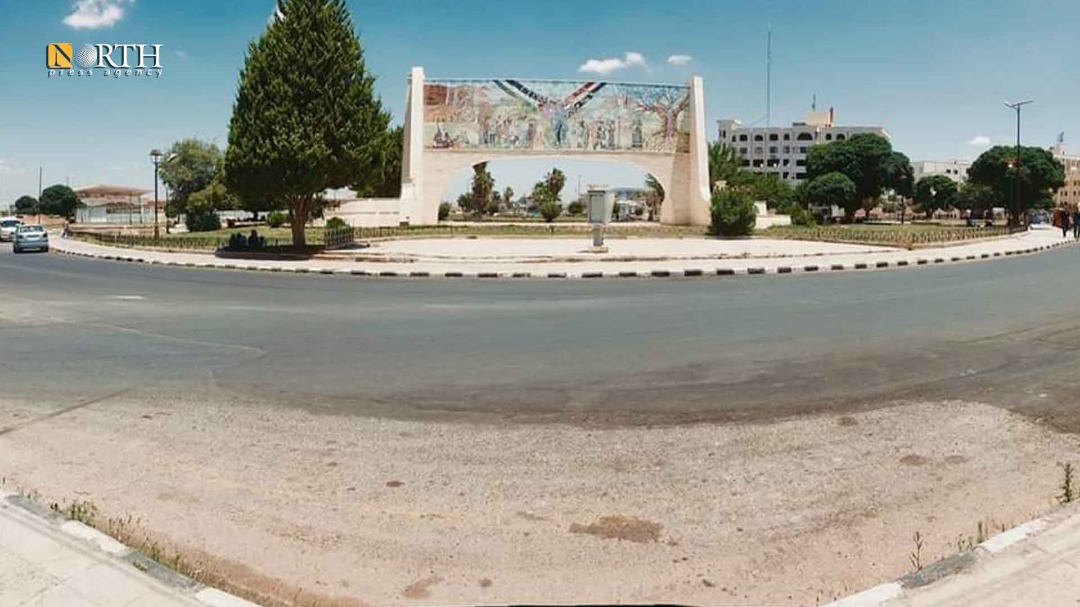DARAA, Syria (North Press) – Unexploded remnants of war in Syria’s southern governorate of Daraa still threaten people’s lives. Some people have died and others were injured.
In November 2021, the 11-year-old son of Muhammad Abu Noqta, an alias for a citizen from Tariq Sad neighborhood, died in the explosion of war remnants.
“My son and his friends found a missile carcass on their way back from school. They messed up with it and so it exploded,” Abu Noqta said.
His son was severely injured and has shrapnel almost all over his body. He died a week later, while the son’s friends had light injuries.
Unexploded ordnance in Daraa include mines, artillery shells, mortar shells, cluster bombs and unexploded missiles.
“The death of my son was too difficult to bear. The government bears responsibility for the death of my son because it did not send anti-mines specialized teams to clear the populated area from unexploded remnants of war.”
Landmines were planted and unexploded ordnance were left behind by various Syrian opposition factions in the beginning of the Syrian conflict and lately by the Syrian government forces during its battle to recapture Daraa.
Government forces’ apathy is deliberate
On October 30, a bomb, which was a remnant of war, exploded and claimed lives of three children in the town of Khirbet Ghazaleh in Daraa eastern countryside.
Similarly, Ammar al-Asmi, 55, died in a landmine explosion while cultivating his agricultural land in Tel Semen military site, west of Dael area.
Asem Rahmeh, a pseudonym for a dignitary in Daraa city, said they met government officers more than once and asked them to send anti-mines specialized teams to clear the area but in vain.
Rahmeh said they hear explosions almost daily in the vicinity of Daraa where Syrian government forces situate. Anti-mines specialized teams were only sent to those areas to clear them from unexploded ordnance.
“The Syrian government forces still sees Daraa as the opposition incubator and do not, deliberately, send special anti-mines teams,” Rahmeh added.
As government forces recaptured Daraa three years ago, officers of the Military Security Branch ordered each family to pay 10,000 Syrian Pounds, so that the branch clears the area from war remnants.
On August 29, a bomb explosion near a house claimed the lives of two brothers and injured their mother and sister in Qarfa town in Daraa countryside.
The next day, a bomb explosion caused the death of Muhammad Sayel, 11, and another child’s leg was amputated in Sour town, al-Lajat area.
Awareness at schools
Nour al-Masa’id, a 36-year-old primary teacher, designated one lesson in a week to provide mine risk education for children.
The teacher decided to take responsibility of giving awareness sessions in the school where she works after several children lost their lives.
“My expertise was almost zero. But I surfed the net and watched videos that explains how to deal with unexploded remnants of war and I convey the information I learned to the students,” she said.
The teacher uploaded images of cluster bombs, missiles, artillery shells and landmines from the Internet and showed them to her students so that they keep away from them.
On March 10, one child lost his life and another was injured as a landmine exploded in an agricultural land where they were present in Tafas city in Daraa western countryside.
Few days earlier, a tank shell exploded causing the death of a child in Na’ima town in Daraa eastern countryside.
The teacher said that the awareness sessions were approved by the students, their parents and the education staff in her school as well as others.
The teacher is planning to implement her awareness sessions in other schools to provide education on risks of unexploded ordinances amid absence of organizations interested in raising awareness.

